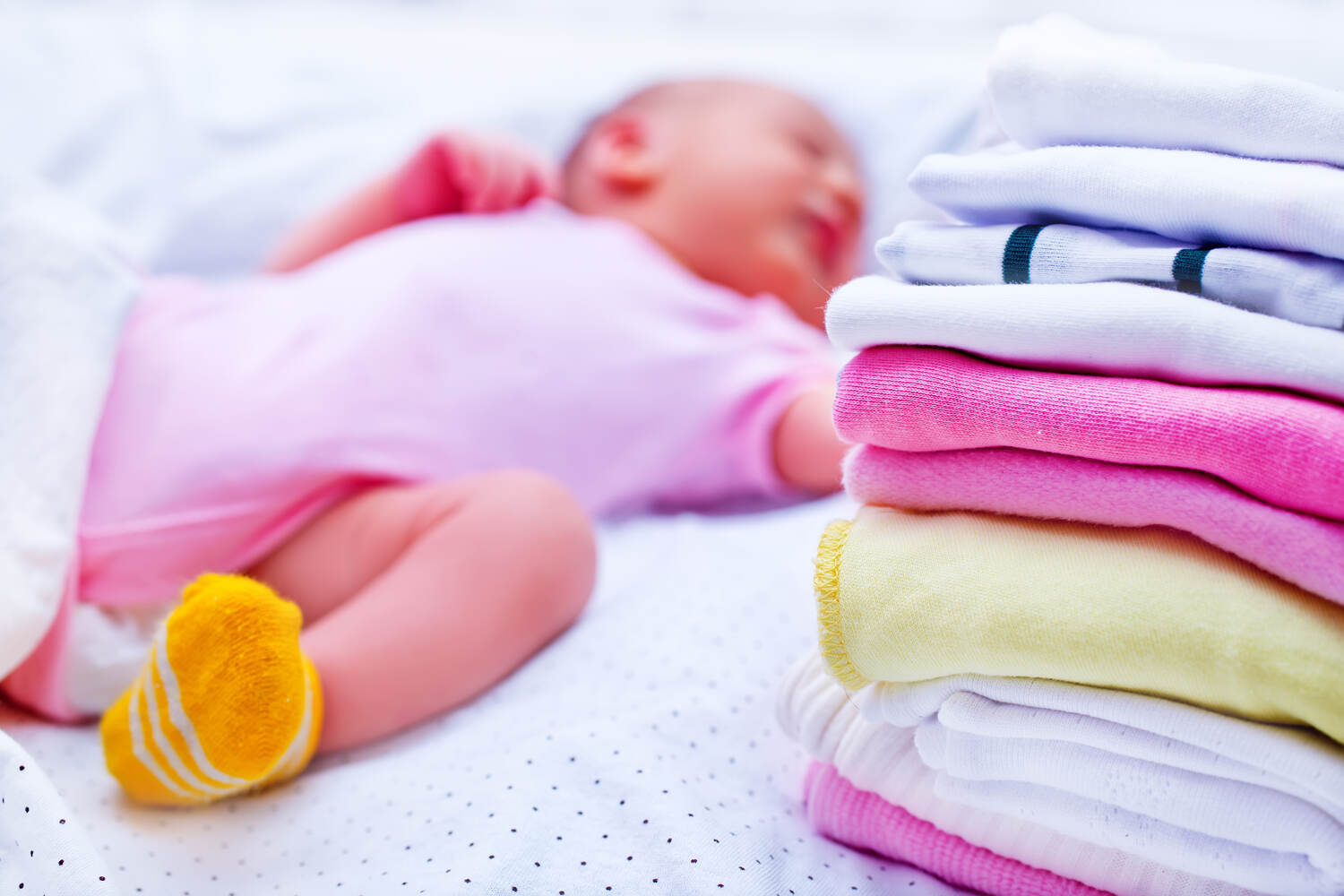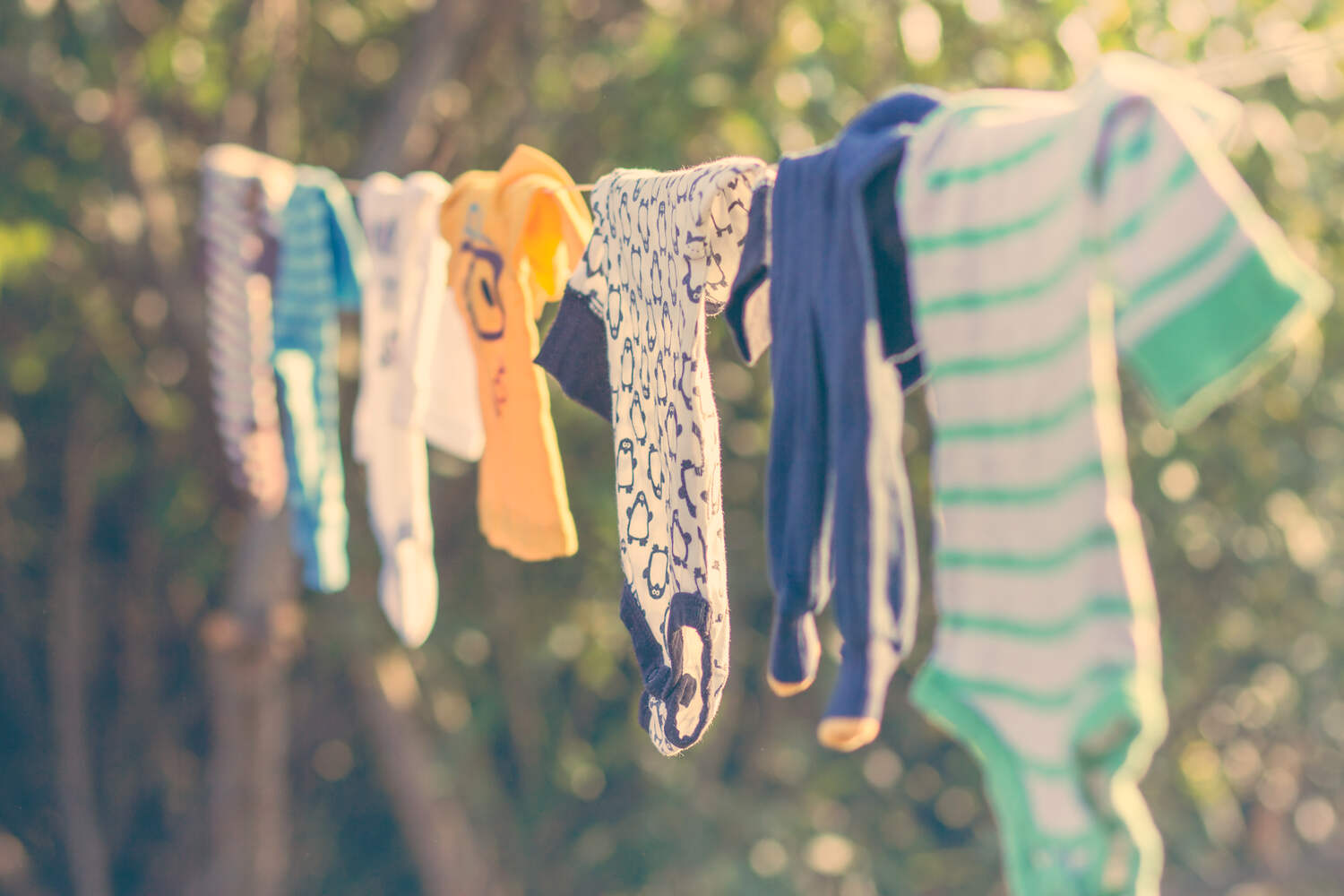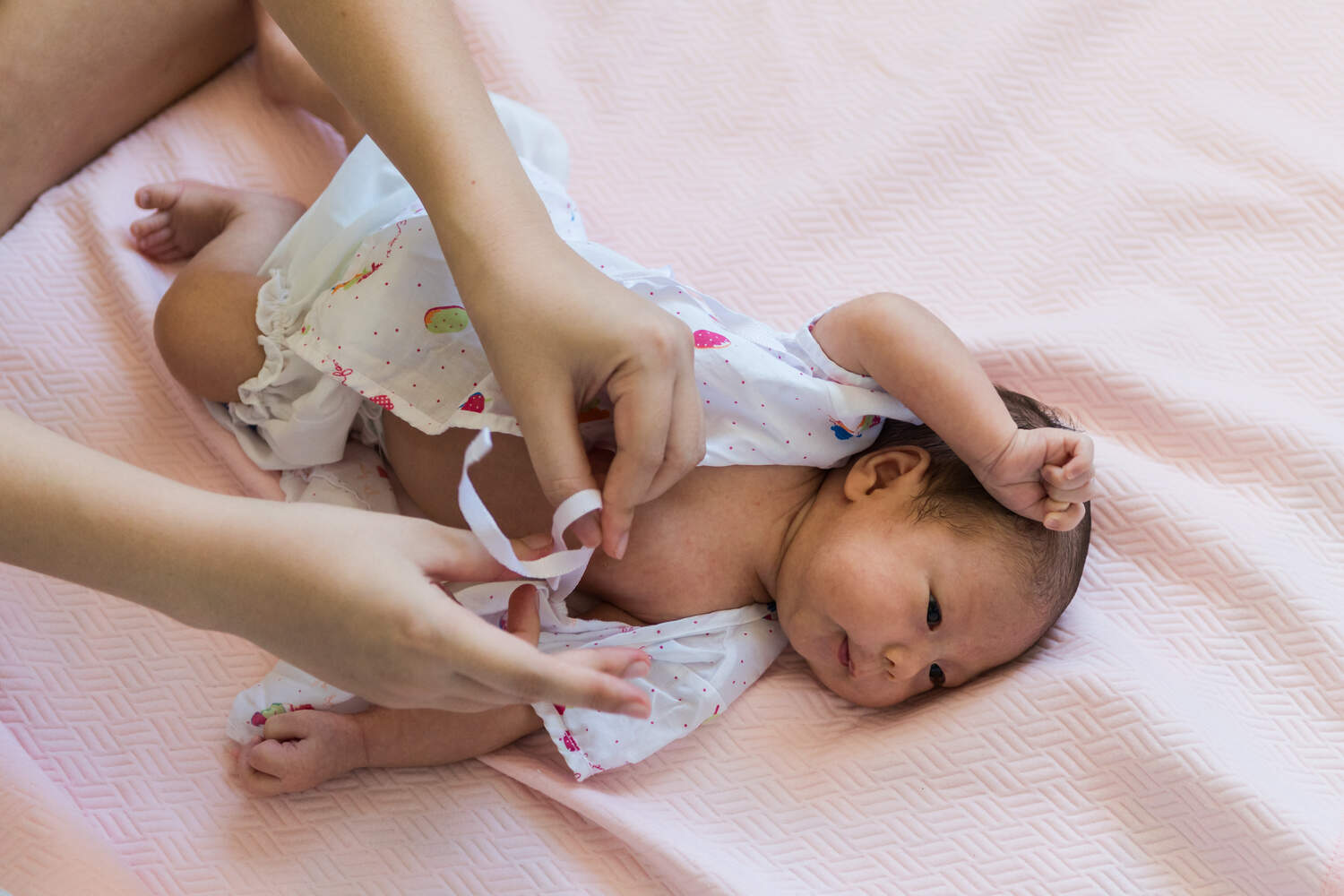
New parents and would-be parents often wonder to how choose and buy newborn clothing for their little ones. Dressing a newborn requires careful planning. Factoring in the weather conditions, how quickly the baby is growing, and the type of clothes needed is important when planning your baby’s wardrobe.
Many types and brands of clothing are available for little ones. Since newborns grow fast, they may grow out of their clothing quite quickly. Hence it is important to have a proper understanding of what type of clothing to buy, how many pieces of each clothing and how to dress your baby for different weather conditions and for different times of the day.
In This Article
- How to Know The Right Size When Dressing Your Little One For First Six Weeks
- Types of Newborn Clothes
- What To Look For Before Buying Newborn Clothes
- How Many Newborn Clothes Should I Have?
- How to Dress a Baby For The Cold
- How to Dress a Baby For the Hot Weather
- How to Dress a Baby For the Breezy Weather
- Signs That It’s Too Cold For The Baby
- Tips to Help You Dress Up Your Newborns Easily
- FAQ’s
How to Know The Right Size When Dressing Your Little One For First Six Weeks
Babies less than 3 months old do not require fancy clothes or a huge variety of dresses. When dressing little ones, it is important to keep the babies comfortable. The right size is typically labeled in every dress. Sometimes the size may vary depending on the brand. Every child is unique and their body may vary.
The brands design their baby clothes by keeping the baby’s weight in their mind and not all sizes are the same. This means some clothes may fit perfectly within their age limit while others will be too small or too large. It is best to pick the best size by checking the brand’s size chart before buying any kind of dress. The sizes parents can expect to see for the first six weeks are:
- P (Preemie)
- NB (Newborn)
- 0-3 months
It is not that complicated to find the size for newborn clothing for the first six weeks. Here, P size fits for up to 6 lbs and height up to 18 inches. The newborn size dress fits for babies around 6-9 lbs and height is 18 to 21.5 inches. The 3-month size dress fits 9-12.5 lbs and height is 21.5-24 inches. Parents can keep in mind that their little one’s weight decides the size of the dress and not the brand’s size.
Types of Newborn Clothes

Newborn clothing dresses include onesies, bodysuits, rompers, all-in-ones, nappies, jumpsuits, footies, singlets, creepers, kimono tops babygro, snapsuits, blanket sleepers, baby gowns, burp cloths, bibs, shoes, socks and coveralls. The first and foremost thing every parent should know is that the newborn clothes must be comfortable, soft and easy to access. Also, babies should always have one extra layer of clothing over what the parents are wearing to ensure proper thermal regulation (1)
1. Bodysuit
A bodysuit is the most popular and resourceful piece of clothing for newborns. This type of clothing has three different versions – sleeveless, short sleeve and long sleeve. The bodysuit covers the newborn’s skin, closes and avoids uncomfortable wrinkles. It also has freedom of movement with legs. It is easy for nappy changes and to re-fasten.
2. Rompers
Rompers are the trending choice of clothing for newborns. A romper is a one-piece dress with various style options. This is also a cost-effective dress because parents-to-be need not worry about purchasing separate tops and bottoms. Rompers are loose compared to the bodysuit and have a closure in the crotch area for easy diaper change.
3. Onesie
A onesie is a cloth paired with pants, shorts or skirts. This is a great option for keeping the newborns warm and keep the dress in a place without mess.
4. Kimono Tops
Kimono tops look like sweaters or wrap-style shirts. These type of dresses do not have any irritating buttons, zippers, or seams near the newborn’s umbilical cord stump. The kimono has an opening on the side to avoid pulling over the newborn’s head.
5. Creepers
Creepers are typically for newborns and the design is oriented towards diapers.
6. Bibs And Burp Cloths
This is one of the important clothes for newborns. Bibs and burp clothes reduce the need for frequent changing of clothes. A burp cloth helps absorb the baby’s spit, burp, and drool after feed.
Newborn’s clothes are mostly unisex for the first few months. As a new parent, they were navigating the vast area in newborn clothing style. Dressing up is fun and a milestone. Parents should not compromise for the comfort of the newborn.
What to Look For Before Buying Newborn Clothes
Buying newborn clothes is always exciting for parents to be. It is always considered an emotional attachment towards their little ones. Here, is a list of factors every parent should check before buying a newborn:
a. Safety
Do not buy newborn clothing with decorations like tassels, glitter sequences, beads, bows, buttons and hooks because they can cause discomfort and choking hazards.
b. Size
The size should fit the baby right. This will allow for free air circulation. The dress must be friendly to wear and easy to remove too.
c. Cost
It is always best to choose a good quality for newborns. Never compromise on the quality for a low price. Affordable clothes are available both online and offline.
d. Climate
Buying an item of season-appropriate clothing is a must because they need to be warm enough in winter and comfortable in summer too. Newborn’s legs and arms are covered when going out in the sun. Newborns don’t overheat, especially during sleep so sleepwear is recommended.
e. Material
Cotton is most preferred for newborns. Synthetic and polyester are big no for newborns. They have sensitive skin, so soft materials are best.
How Many Newborn Clothes Should I Have?

The number of newborn clothing to buy depends on personal preferences and circumstances. There are factors before purchasing newborn clothes. They are
1. Laundry Frequency
Newborns tend to have multiple changes in clothing due to spit-up, diaper leaks and mess. If parents do frequent laundry then there will be less need for too many clothes
2. Season And Climate
Consider the climate and season during newborns’ early newborn months. If it is summer they require light and breathable clothes and expect easy drying. In colder or rainy seasons, newborns need to be covered in layers.
3. Helping Hands
Not all parents get support from friends and family. If they do not have anybody to assist in helping do laundry and chores the parents will need to plan to buy more clothes for the newborn.
4. Money
Investing a huge amount in a newborn’s wardrobe is not essential for the first few weeks. The key is to keep them safe and comfortable.
How to Dress a Baby For The Cold

During the colder season, sweaters, hats, and mittens play a vital role in keeping the newborn warm. Footies attached to mittens prevent colds, prevent babies from scratching and keep the skin comfortable. It is best to keep the newborn in layers. In colder months, Frostbite happens when the blood vessels and nerves are in extreme cold. Full cover or sweaters will make the baby comfortable but at the same time, it should be movement-free to rotate their legs and hands.
How to Dress a Baby For The Hot Weather
In hot weather, dress the newborn in loose and single and nappy. When the temperature rises 75 degrees Fahrenheit, it is safe to wear only a single layer. It is better to wear a hat to protect from too much sunlight. Tight clothes or many layers of dresses will cause the newborn to get cranky and irritable. Parents can easily find out if their newborn is too warm and they may look sweaty and breathe rapidly.
If the newborn’s hand skin is red or sweaty, this is a sign that they are too hot. You must choose light clothes for your little one. Choose a fabric with high UV protection to get rid of sunburn.
How to Dress a Baby For The Breezy Weather
Breezy weather may cause sneezing or cold in newborns. They should be covered properly in such weather. Using footmuffs can be a great option. Using body suits and onesies can be beneficial if the weather is too cold outside. Too much layering may not be needed if the weather is pleasant.
Signs That it’s Too Cold For The Baby
The normal room temperature for babies does not exceed 75 degrees Fahrenheit (20.5 to 24 Celsius). Newborns with colds have watery nasal discharge. The signs of a cold include
- Sneezing
- Coughing
- Red eyes
- Lack of appetite
- Difficult feeding
- Stuffy nose
The newborn will be in a swaddle most of the time. It is vital to learn how to swaddle the baby properly using a muslin or thin cotton cloth. Blankets must be avoided for babies.
Tips to Help You Dress Up Your Newborns Easily

Parents need to know how to dress a baby according to climate and newborn comfort. There should be no compromise in dressing newborns with utmost care. The cloth should easily get over the baby’s head without any discomfort, so the baby feels soft. While wearing a cloth to newborns they should be facing upward towards you, not inwards toward you. Remember to dress in ways so that your baby feels comfortable and not too hot or too cold.
Here are a few tips to dress your newborn baby
- Slide one arm first, then slightly turn the baby and put the other arm
- Do not pull the dress fast or without removing the buttons
- For safe sleeping, make sure the newborn is dressed comfortably for the room temperature
- The surface or change tables should be flat and foldable to change with ease
- Keep away anything that could harm the newborn
- The clothes should be clean and washed every single use with mild detergent
Planning newborn clothing is exciting for parents. It is important to remember that babies grow quickly and hence buying too many clothes or pieces of newborn clothing may not be useful. Consider the weather and temperature conditions when planning your newborn baby’s wardrobe. Always opt for good quality, soft, hypo-allergenic clothing that will continue to remain soft even after multiple washes. If you have a washing machine at home, remember to buy clothes that are machine-friendly.
FAQ’s
1. How to Dress The Baby For Sleeping?
You must dress your baby for sleep based on the weather and temperature. Ideally, you need not bundle your baby into layers of clothing unless it is too cold outside. In normal weather conditions, you can dress them in a comfortable soft onesie and swaddle them. The clothes should be breathable and not cause any kind of choking risks.
2. How to Dress a Baby For a Car Seat?
If the weather is pleasant you can dress your baby in a comfortable onesie. Choose clothing that has easy access for diaper change when on the move. You can always add a pair of shorts or pants to prevent any inconvenience from the car seat buckle.
3. What is The Right Temperature For Infants?
The ideal temperature for babies is between 20.5 and 24 Celcius. If you use an air conditioner at home, you can set it to this temperature range. Babies can be happy with basic clothing minus the additional layering at these temperatures.
References
- The effects of clothing layers on the thermoregulatory responses to short duration babywearing in babies under 12 months old – PMC – [https://www.ncbi.nlm.nih.gov/pmc/articles/PMC7202982/]
